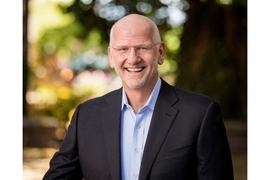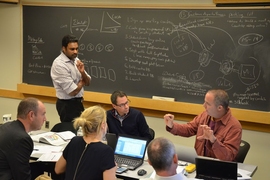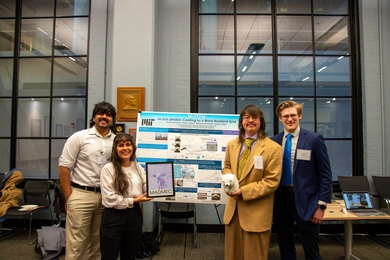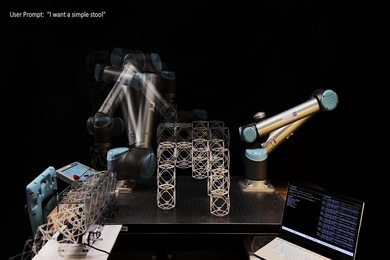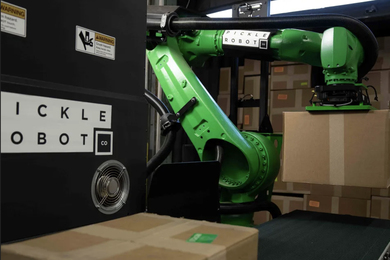For many, reaching the C-suite for senior executive officers may seem like the pinnacle of success. Power, prestige, the opportunity to make a lasting impact — not to mention that spacious corner office. But how do executives arrive at those top spots? What does it take to stay and thrive in the role? And what can we learn from the experience of others that can be applied to our own career paths?
Just as there are many incentives that drive an executive’s desire to land in the C-suite, so are there many potential paths to get there. That is especially true in today’s dynamic business environment, which demands that leaders be comfortable managing a state of nearly constant change.
Veteran executive advisor and coach Cassandra Frangos spent her career helping Fortune 500 companies assess and select C-suite executives. She shares her experiences and expertise with those seeking leadership positions in her recent book, “Crack the C-Suite Code: How Successful Leaders Make It to the Top.” The book includes interviews with dozens of CEOs and other C-suite executives from a broad range of companies and industries, as well as hundreds of executives who are likely to be C-suite candidates in the future. Frangos also interviewed the topmost experts in executive recruiting, leadership development, and management academia.
“I talked to as many C-suite executives as I could, across industries over a multi-year period — at conferences, networking events, and over the course of my everyday job. I got in the habit of asking them to tell me their stories,” Frangos shared in a recent webinar for MIT Sloan Executive Education. “Suddenly, I was the one asking the question: 'So, what did you do to reach C-suite?'”
With this research and inquiry as the backdrop — along with her keen interest in the intersection of psychology and business — Frangos offers a practical framework for how leaders can prepare for and achieve the corner office. This work has also informed a new program at MIT Sloan Executive Education, Strategies for Career Development: Charting Your Path to the C-Suite. The inaugural session of the program was held in September and received great reviews from participants who appreciated the insights, interactivity, and 360-degree assessments the program provides. Frangos teaches the program alongside MIT Sloan Professor Roberto Fernandez.
Trends to watch
“It’s an exciting time be in in the C-suite — and with it comes a lot of pressure,” says Frangos. “The digital economy changes everything; most CEOs have never before seen this much transformation.”
To manage this kind of change, today’s CEO needs to be both strategic and operational. They need to have a keen understanding of the current and future impact of technology on their business. And they need to be willing to recognize the areas of expertise they need to shore up. Frangos illustrates her points by sharing examples of specific strategies that real executives — including some household names — have used to ascend to the top of their organizations. Her experience offers a glimpse into the real work of succession and offers both inspiration and practical advice.
Another key trend for aspiring executives to watch is the move toward flatter organizational structures. This removes layers of management that can act as a barrier to change, and in turn puts the CEO in charge of more direct reports, making it easier for him or her to get a pulse on the business and act quickly and decisively based on this information.
Within this type of organizational structure, communication is key. The successful CEO needs to be able to clearly communicate their vision clearly to their colleagues, customers, investors, and, perhaps most importantly, to themselves. It is this last audience — understanding one’s own motivations for reaching the C-suite — that is at the core of Frangos’ research and recommendations.
Charting your path
Leaders who have their eye on the C-suite have likely already proven themselves as capable within their organization and in their field. Frangos offers ways to leverage this momentum to help these executives accelerate to the top. From the tenure track to the “leapfrog” path and options in-between, she offers a framework for advancement that is suited to an individual’s goals and strengths.
“When I assess executives who are getting ready to be promoted, I’m often surprised at how many don’t understand what their brand is within the organization,” she says. “For example, they may be very good operationally but need to be seen as more strategic to get to the next level.”
Frangos’ work explores ways leaders can evolve to better align with their leadership goals, as well as zeroing in on other factors that enhance or detract from a chance of success in the C-suite. She also offers proven career development strategies, regardless of where a person is in their organization. Importantly, her approach stresses the need for leaders to cultivate both professional and personal support networks.
Embarking on a path to the C-suite isn’t for the faint of heart, which is why it’s just as important for leaders to assess whether they truly have the appetite and determination to do the work and stay the course.
“Only you can control your destiny,” says Frangos. “No one is doing this for you. You have to chart your own path.”
Strategies for Career Development: Charting Your Path to the C-Suite will be held again in July and October 2020.


